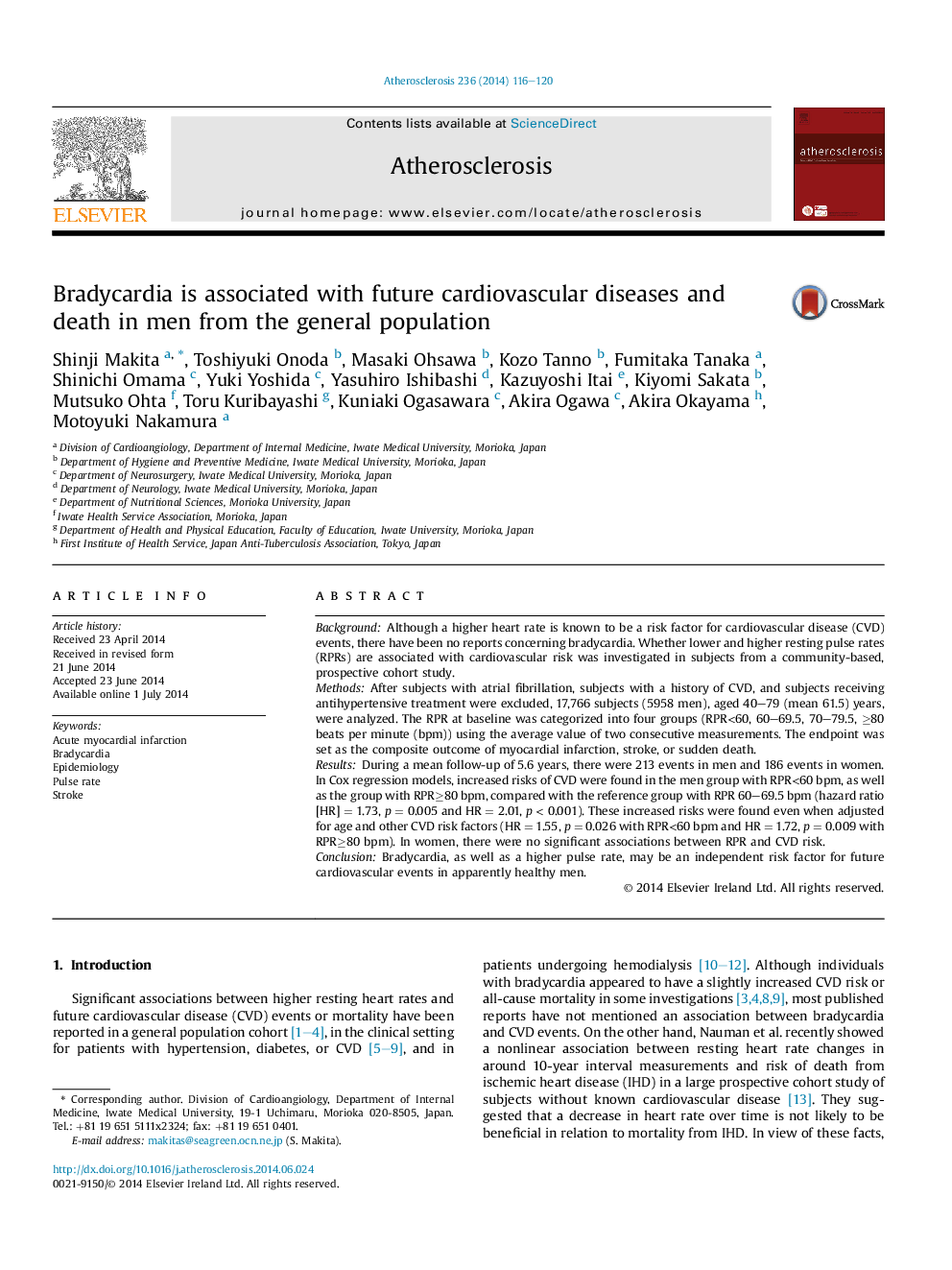| کد مقاله | کد نشریه | سال انتشار | مقاله انگلیسی | نسخه تمام متن |
|---|---|---|---|---|
| 5944880 | 1172346 | 2014 | 5 صفحه PDF | دانلود رایگان |
- U-shaped relationship was found between resting pulse rate (RPR) and CVD risk in men.
- Increased CVD risk was found in the subjects with RPR â¥Â 80 beat/min.
- Increased CVD risk was found in the subjects with bradycardia of RPRÂ <Â 60Â beat/min.
- Risk of myocardial infarction tended to be increased in the subjects with bradycardia.
- Relationship between the risk of cerebral infarction and RPR category show a U-shape.
BackgroundAlthough a higher heart rate is known to be a risk factor for cardiovascular disease (CVD) events, there have been no reports concerning bradycardia. Whether lower and higher resting pulse rates (RPRs) are associated with cardiovascular risk was investigated in subjects from a community-based, prospective cohort study.MethodsAfter subjects with atrial fibrillation, subjects with a history of CVD, and subjects receiving antihypertensive treatment were excluded, 17,766 subjects (5958 men), aged 40-79 (mean 61.5) years, were analyzed. The RPR at baseline was categorized into four groups (RPR<60, 60-69.5, 70-79.5, â¥80 beats per minute (bpm)) using the average value of two consecutive measurements. The endpoint was set as the composite outcome of myocardial infarction, stroke, or sudden death.ResultsDuring a mean follow-up of 5.6 years, there were 213 events in men and 186 events in women. In Cox regression models, increased risks of CVD were found in the men group with RPR<60 bpm, as well as the group with RPRâ¥80 bpm, compared with the reference group with RPR 60-69.5 bpm (hazard ratio [HR] = 1.73, p = 0.005 and HR = 2.01, p < 0.001). These increased risks were found even when adjusted for age and other CVD risk factors (HR = 1.55, p = 0.026 with RPR<60 bpm and HR = 1.72, p = 0.009 with RPRâ¥80 bpm). In women, there were no significant associations between RPR and CVD risk.ConclusionBradycardia, as well as a higher pulse rate, may be an independent risk factor for future cardiovascular events in apparently healthy men.
Journal: Atherosclerosis - Volume 236, Issue 1, September 2014, Pages 116-120
